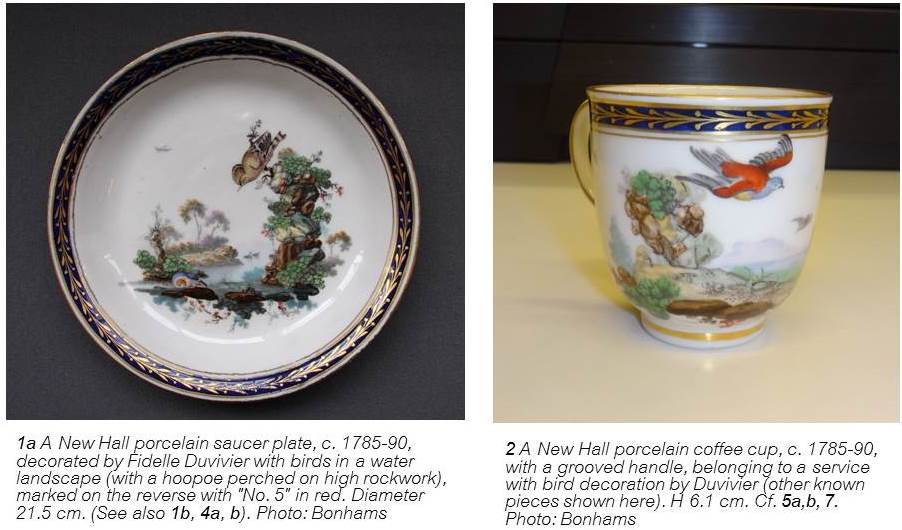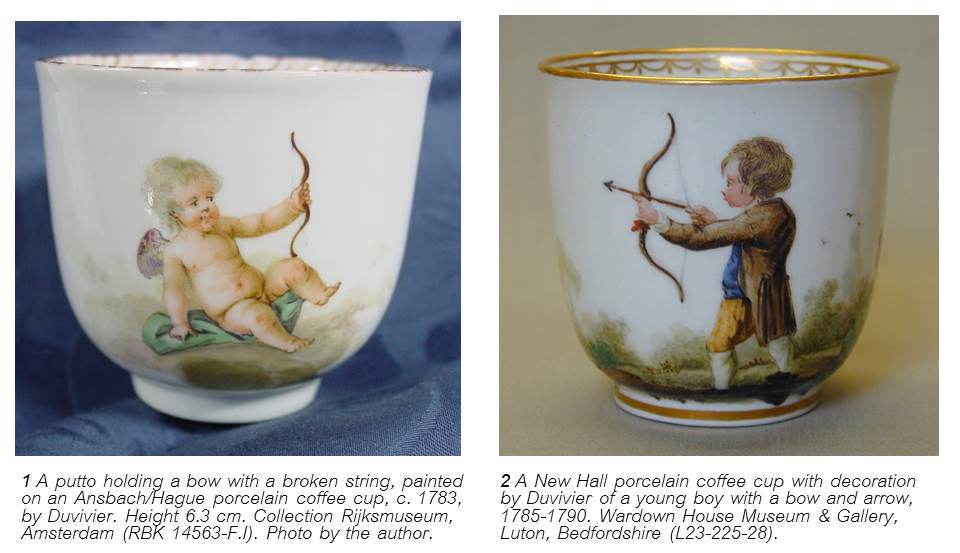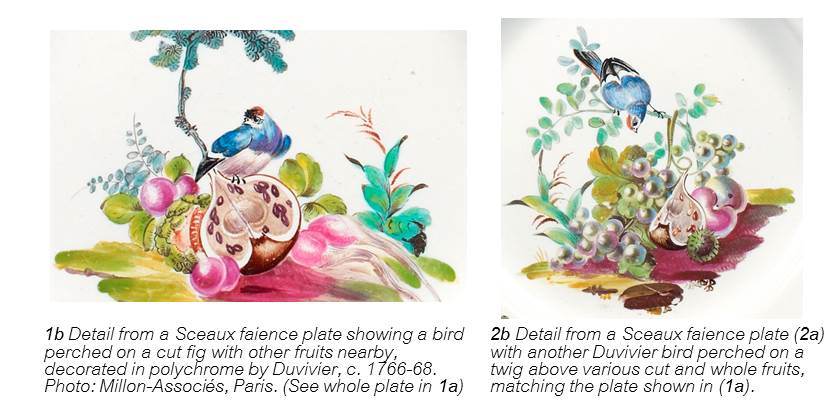
by Charlotte Jacob-Hanson | Jan 3, 2019 | Uncategorized
Ever since beginning to investigate Duvivier’s decorative work on Sceaux faience and porcelain, I have marveled at what an accomplished bird painter he was – both during his time in France, and again, about twenty years later in England.
It would not have been possible to identify his earlier French work without having the helpful stock of “reference images” provided by one particular New Hall part-service with bird decoration (3), which fortunately still exists intact in a private collection. A careful study of these images revealed a number of stylistic details (e.g. in the bird poses and rendering of vegetation) that originated in his French work and carried over into his later bird painting. But here we’ll turn our attention to a second, lesser known, New Hall bird service that Duvivier decorated, with surviving pieces preserved in a few private and museum collections.

by Charlotte Jacob-Hanson | Nov 30, 2018 | Uncategorized
This unusual Worcester plate was one of the four so-called “Grubbe plates” given to the Victoria and Albert Museum in 1935 by Mrs. Dora Edgell Grubbe in memory of her husband, Walter John Grubbe(i). He was a direct descendant of James Giles, the London china retailer and owner of the leading decorating establishment, whose employees decorated a great quantity of Worcester porcelain between 1767 and 1776. Fidelle Duvivier appears to have worked for Giles as an independent decorator either prior to or during the same period that he was employed by William Duesbury of Derby (1769-1773?). With its very French-looking decoration this plate has been tentatively attributed to Duvivier in the past, but just where the decoration comes from and how it fits in place as a piece of Duvivier’s story are explained in my book.(ii)

by Charlotte Jacob-Hanson | Sep 30, 2018 | Uncategorized
Not long ago several pictures of this very unusual Loosdrecht vase (auctioned in England in 2014) were sent to me by its present owner. A rare and curious vase, indeed, for its painted decoration, done by Fidelle Duvivier. We see a draped putto or child holding up a ribbon from which a bat hangs with its wings extended. The vase is unmistakably neoclassical in style, but what is the bat meant to signify in this decoration?

by Charlotte Jacob-Hanson | Aug 15, 2018 | Uncategorized
Fidelle Duvivier demonstrated his exceptional gifts for painting cherubs or putti on porcelain throughout his career – both in England and on the Continent (as mentioned in blogpost #13: ‘More Cherubs on Clouds, painted in The Hague’ – Feb. 27, 2018). Examples have been identified at every manufactory where he was employed – at Derby, Sceaux (i), Loosdrecht, on Ansbach porcelain decorated at The Hague (1), with one late example (5) known from the period of his second stay in England, when he worked for the New Hall manufactory, c. 1785-90. Most were painted in puce camaïeu, and some of his finest examples are found on Loosdrecht porcelain, with a new example shown below (3).(ii)

by Charlotte Jacob-Hanson | Jun 24, 2018 | Uncategorized
This colorful pair of birds by Duvivier appears on two twelve-lobed faience plates made at Sceaux. One is perched on cut fruit, while the other hovers on a low twig just over the ground, eyeing delectable fruits spread out below. (The whole plates are shown below in 1a and 2a). Their claws are delicately rendered in black, painted almost like inverted commas. We find a good many examples of Fidelle’s birds on the popular Sceaux dessert plates with the blue “notched” edges, and these creatures are often standing on elevated rocky plateaux (i). But on another such plate appearing at an auction in 2017, Duvivier painted a couple of feathered specimens with similar “black-comma claws,” engaging each other on two kinds of vegetation spread across the plate (3c).





